4 The Classical Era
Introduction
While the term “classical music” generally describes art music of any time period, the Classical Period refers to music between 1750 (the end of the Baroque, marked by the death of J.S. Bach) until the early 1800s (the start of the Romantic period). During this time of societal change, the middle class demonstrated their improved social standing by attending opera performances and purchasing instruments like the piano. While many composers worked during this time, it is especially remembered for a trio known as the First Viennese School—Haydn, Mozart, and Beethoven—who heavily influenced various genres and musical forms.
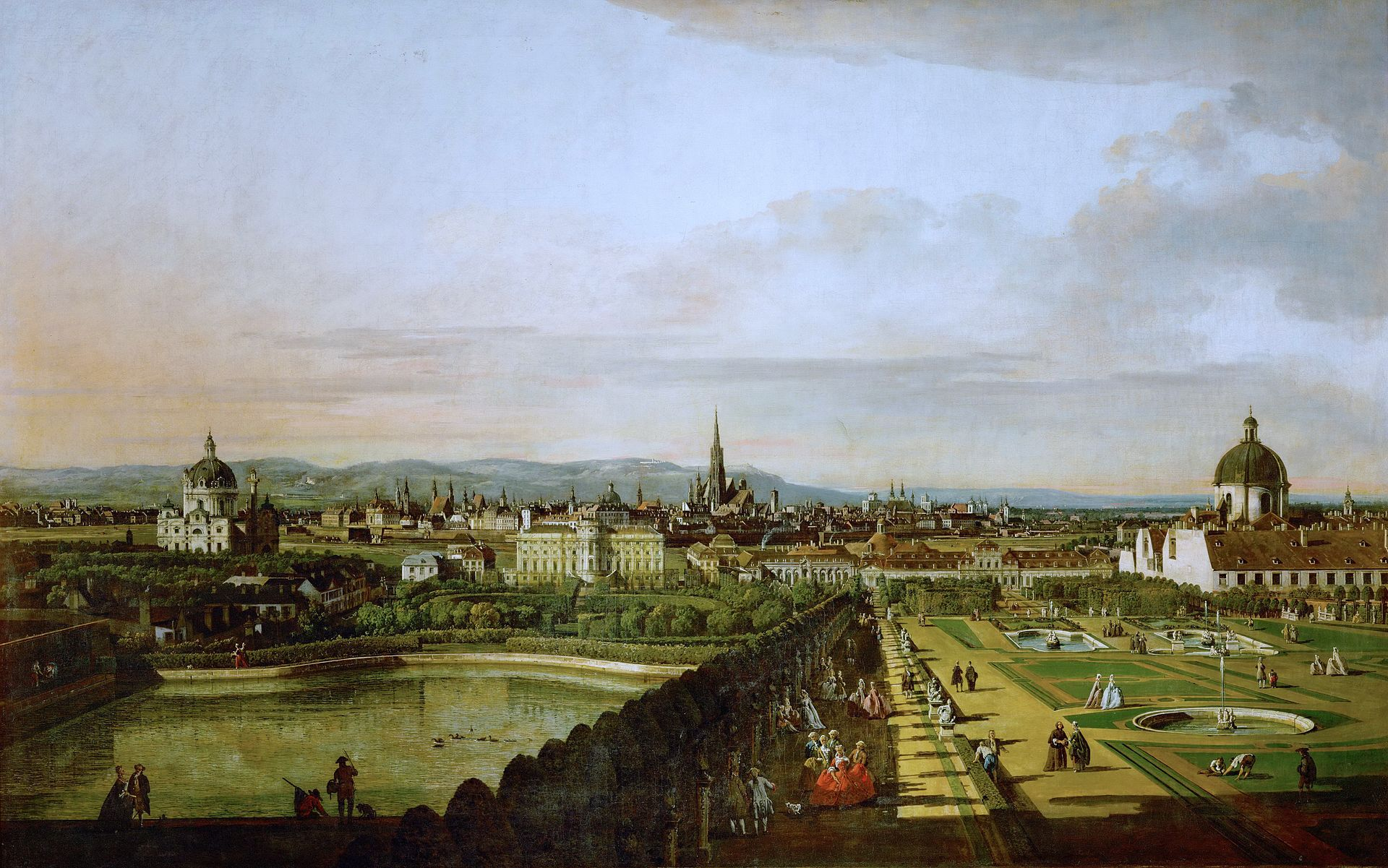
As the Baroque period ended, two major movements developed. The first was artistic: Classicism. Artists and architects were interested in the aesthetics of ancient Greek and Roman art, emphasizing balance, symmetry, and simplicity. In music, these ideas appeared as less ornate and comparatively simpler melodies with homophonic textures, not the rich polyphony of Bach and Handel. The second was philosophical: the Enlightenment, which encouraged scientific thought, democracy, and equality. Much of the music moved from the courts and the churches to the public concert and the middle-class home.
Musically, Baroque works tended to use the same general rhythmic patterns and convey the same general mood or affect throughout a piece; dynamics would dramatically shift from loud to soft or soft to loud. In the Classical era, however, pieces used more variety in rhythmic patterns, shifted moods, and would shift gradually from one volume to another.
A Sample of Events from History and the Arts
- 1732: Haydn born
- 1750: J. S. Bach dies
- 1756: Mozart born
- 1762: French philosopher Rousseau publishes Émile, or Treatise on Education, outlining Enlightenment educational ideas
- 1770: Beethoven born
- 1776: Declaration of Independence in the U.S.A.
- 1781: Mozart settles in Vienna
- 1789: Storming of the Bastille and beginning of the French Revolution (Paris, France)
- 1790: Beethoven moves to Vienna
- 1791: Mozart dies
- 1791-95: Haydn travels to London
- 1792: Beethoven moves to Vienna
- 1803-1815: Napoleonic Wars
- 1809: Haydn dies
- 1827: Beethoven dies
Opera Becomes Mainstream
While the opera seria of the Baroque focused on gods and kings for upper-class audiences, the new comic opera of the Classical period included characters relatable to the middle class, people with everyday situations. They often poked fun at the upper class and promoted social change.
Mozart’s opera The Marriage of Figaro (Le nozze di Figaro) tells the story of the barber Figaro and his fiancee Susanna outsmarting antagonist Count Almaviva. This aria is a perfect example of comic opera’s everyday heroes and upper-class villains. The servant Figaro has learned that Count Almaviva plans to abuse his aristocratic power and exercise droit du seigneur—a lord’s right to sexual relations with a servant on her wedding night—with Susanna, and Figaro plans on using his superior wits to stop the Count. You can see a performance below:
YouTube Video: “Accessible Arias: Erwin Schrott sings ‘Se vuol ballare’ from The Marriage of Figaro” by Royal Ballet and Opera
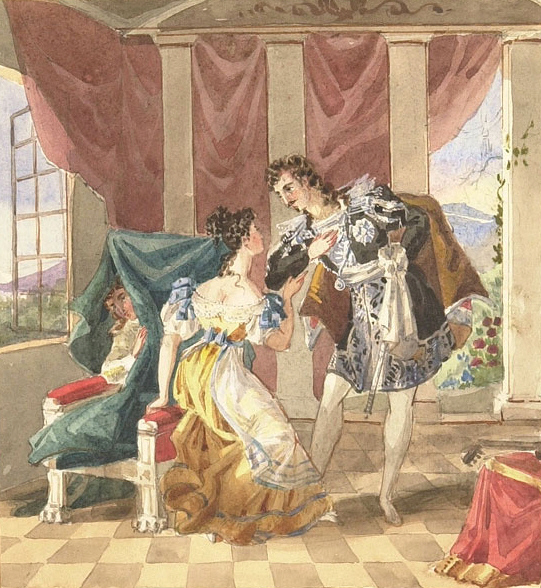
The Piano
In addition to attending public musical performances, the emerging middle class could afford instruments like the piano to make music in their own homes. Short for pianoforte, it could play both soft (piano) and loud (forte) dynamics and gradually increase and decrease in volume, something not possible with the Baroque harpsichord. Owning a piano was a status symbol, and piano playing was an admired skill for a young woman looking to marry. As such, composers wrote and published many piano works for the growing demand from amateur pianists.
To see an example of music written and compiled for developing pianists, check out Nannerl’s Music Book. Leopold Mozart (father of Wolfgang Amadeus Mozart) gave this book to his daughter, Maria Anna (Marianne) Mozart, nicknamed “Nannerl.”

Bonus Video: Leopold Mozart, Nannerl Notenbuch
YouTube Video: “Mozart Nannerl’s Music Book K.1a to K.5a (Complete)” by Alan Chan
The young Mozart children performed across Europe. While Wolfgang Amadeus Mozart would go on to be one of the most remembered musicians and composers, societal norms restricted opportunities for women; once Marianne was of marrying age, she stopped touring. She became a piano teacher in Salzburg.

Franz Joseph Haydn (1732-1809)
Joseph Haydn, the first of the great Classical composers, started from humble beginnings. He came to Vienna as a choirboy, but after his voice broke, he struggled as a freelance musician until he was hired as music director for the court of Prince Nikolaus Esterházy. He had the status of a servant, but his master loved music, so Haydn had no lack of opportunities to write music. His big break came after the Prince died, as Haydn was then allowed to travel. He traveled to London and gave a series of concerts that were very successful, both critically and financially. When Haydn died, he was one of the most respected composers in all of Europe. He started composing when Bach died (1750), and he kept composing until the time that Beethoven wrote his Fifth Symphony (1808), so he left a vast body of work.
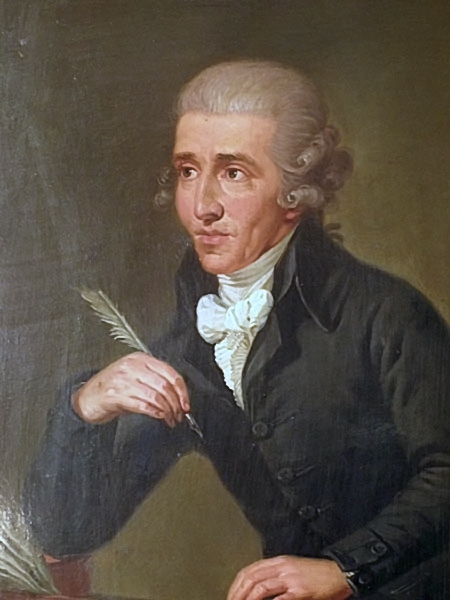
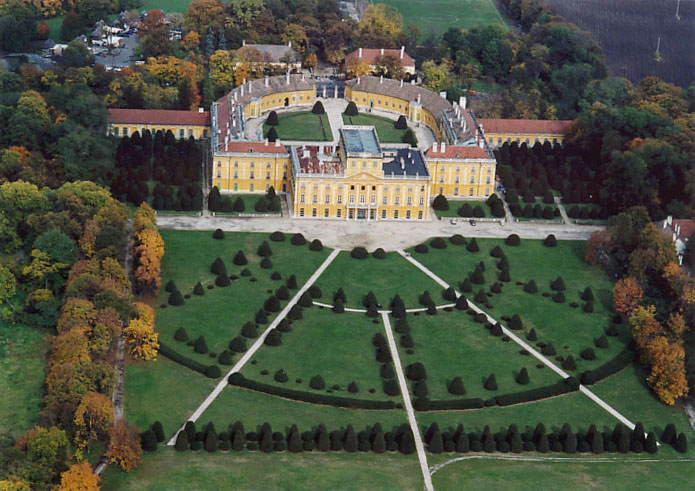
Like his younger contemporaries Mozart and Beethoven, Joseph Haydn composed in all the genres of his day. From a historical perspective, his contributions to the string quartet, the symphony, and the sonata-allegro form are particularly significant: He is affectionately referred to as Papa Haydn for his work developing those items. His music is also known for its motivic construction, use of folk tunes, and musical wit. Central to Haydn’s compositional process was his ability to take small numbers of short musical motives and vary them in enough ways to provide interesting music for movements that were several minutes long. Folk-like as well as popular tunes of the day can be heard in many of his compositions for piano, string quartet, and orchestra. Contemporary audiences and critics seemed to appreciate this mixing of musical complexity and the familiar. Additionally, many of his contemporaries remarked on Haydn’s musical wit or humor. Several of his music compositions play on the listeners’ expectations, especially through the use of surprise rests, held-out notes, and sudden dynamic changes.
Ex. 4.1: Franz Joseph Haydn, Emperor Quartet, second movement
In 1796, the Austrian government asked Haydn to compose a national anthem in response to Napoleon’s invasion. He wrote “The Emperor’s Hymn” and used this melody as the second movement to a string quartet: a theme and variations. During the variations, each instrument has the chance to play the theme while the other instruments provide accompaniment.
Ex. 4.2: Franz Joseph Haydn, Symphony No. 101 (The Clock), second movement
This is one of Haydn’s London Symphonies, composed during his well-received and financially lucrative trip to London. It’s nicknamed “The Clock” because of the recurring “ticking” in the second movement. The London public loved these symphonies. One reviewer commented on The Clock Symphony:
“As usual the most delicious part of the entertainment was a new grand Overture [that is, symphony] by HAYDN; the inexhaustible, the wonderful, the sublime HAYDN! The first two movements were encored; and the character that pervaded the whole composition was heartfelt joy. Every new Overture he writes, we fear, till it is heard, he can only repeat himself; and we are every time mistaken.
Joseph Bologne, Chevalier de Saint-Georges (1745-1799)
While the Classical Period is best remembered for the works of the Vienesse Haydn, Mozart, and Beethoven, there were certainly other composers in other cities writing excellent music.
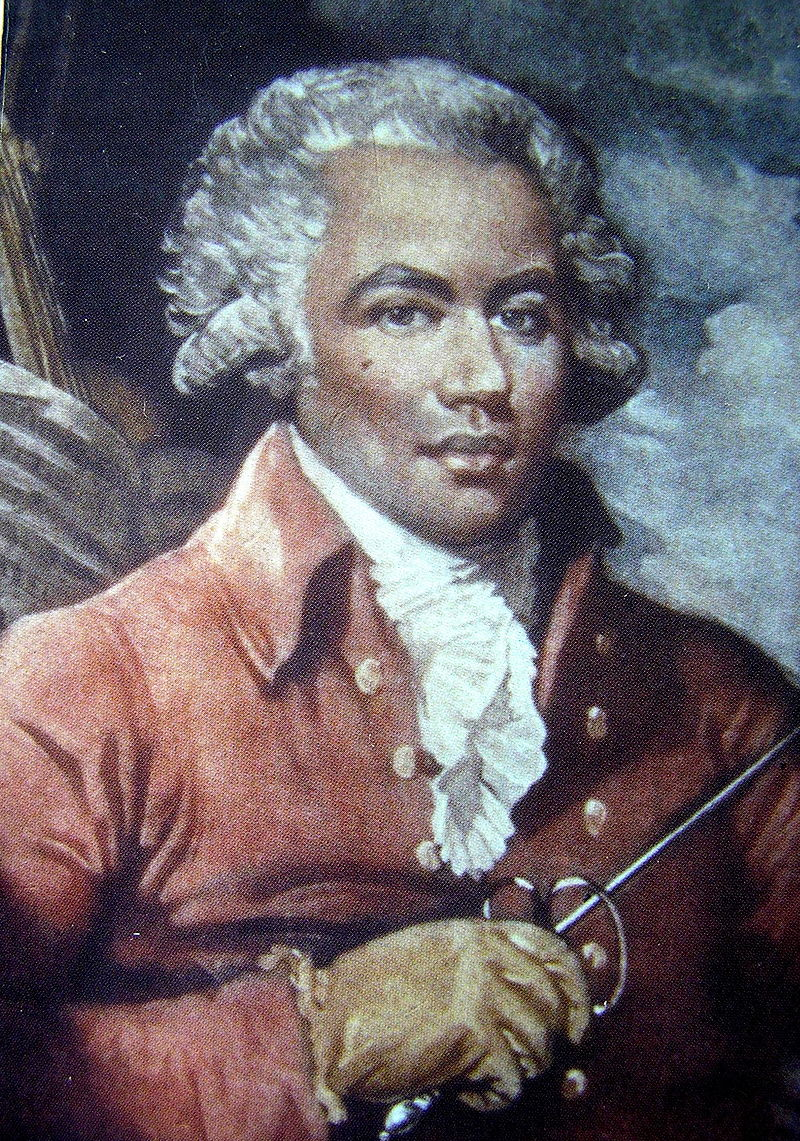
Bologne was born to a wealthy plantation owner and the African slave of the plantation owner’s wife. His father had him educated in France. Also known as Saint-Georges, he experienced discrimination due to racist laws before the French Revolution as he was multiracial. In 1789, the revolution declared equal rights for all people of France; Saint-Georges supported this movement and joined the Revolutionary Army, where he reached the rank of colonel.
Not much is known about Saint-Georges’ musical training, but he did impress the audiences of Paris with his violin playing. His first string quartets were inspired by the string quartets of Haydn. Saint-Georges became music director of the orchestra Concert de la Loge Olympique; in that role, he commissioned Haydn to compose six symphonies and conducted their performance.
Joseph Bologne, Chevalier de Saint-Georges is remembered as a man of many accomplishments—conductor of an accomplished ensemble, virtuoso violinist, skilled fencer, and athlete—and one of the first known Black classical composers.
Ex. 4.3: Joseph Bologne, Chevalier de Saint-Georges, Symphony No. 2 in D Major
This three-movement symphony includes an energetic first movement, with a development section inspired by Haydn, a second movement in the contrapuntal style of the late French Baroque, and a final energetic and catchy final movement.
Wolfgang Amadeus Mozart (1756-1971)
Mozart was a child prodigy. His father, a court violinist and author of a violin instruction book, recognized the boy’s musical talents at an early age. By age six, Mozart was playing violin, piano, and organ, as well as composing and performing throughout Europe. He wrote in every genre and was especially gifted at composing opera. As previously mentioned, the Baroque opera seria (usually performed in the courts of the aristocracy with stories of kings and gods) fully gave way to comic opera, where people of all classes could see everyday, middle-class characters who often poked fun at the upper class.
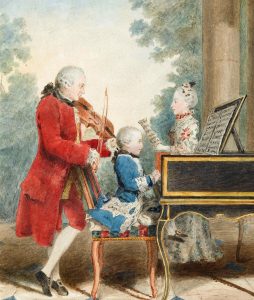
At age 25, Mozart attempted to seek fortune as a freelance musician, not as a servant of a court or a church. He moved to Vienna for its vibrant music scene and made a living teaching, performing, and composing. Mozart crossed paths with Haydn, and the two sometimes played together in informal string quartets; Haydn played violin and Mozart played viola.
Unfortunately for Mozart, he was not good with money, and his success varied throughout his career. He died young—at thirty-five years old—he lived to be half the age of Handel or Haydn.

Sonata-Allegro Form
Haydn and Mozart helped establish sonata-allegro form with their music. So what is sonata-allegro form?
Sonata-allegro form is a complex version of ternary, or ABA form. It is also the most common form in the repertoire of the Classical Period; nearly all first movements of multi-movement works are in sonata-allegro form, and these first movements are typically fast, hence the “allegro,” an Italian word meaning quick or cheerful.
In the first section, the exposition, all of the themes (main melodies) are introduced. Generally, there are two themes, and the second theme contrasts the first in character, mood, and key. The second section, the development, is the most dramatic, moving through different keys and reworking themes in interesting ways. The recapitulation returns to the material of the exposition, but while each theme could be in its own key, all themes during the recapitulation are in the tonic key—the harmonic home, or first and last note of a scale.
Many of these works are preceded with a slow and stately introduction, with mysterious harmonies to pique the listener’s curiosity, and a coda, the musical equivalent of saying “the end” over and over.
To complicate the terminology: sonata-allegro form is often abbreviated as sonata form, but this is different from the genre of sonata, which is a multi-movement work for a solo instrument. For example, Beethoven’s “Moonlight” Sonata is a three-movement work for solo piano.
Ex. 4.4: Wolfgang Amadeus Mozart, Symphony No. 40, first movement
This work, one of Mozart’s most popular, was written for the full-sized Classical orchestra, but as it’s not particularly festive (it’s rather urgent and brooding), there are no trumpets or timpani. This symphony, along with Mozart’s 39th and 41st, was composed during a six-week span a few years before he died.
While listening to this piece, note that the first theme is persistently rhythmic in a minor key, and the second theme is comparatively stately, songlike, and in a major key. Also interesting is the presence of fugato, or fugue-like treatment of the theme shortly into the development. While the Classical period generally had more homophonic music compared to the polyphony of the Baroque, the great composers studied counterpoint and could use polyphony for dramatic effect.
This piece has a number of unique features. It doesn’t open with a traditional series of chords, rather, the violas play accompaniment as we wait for the melody to appear. The first theme repeats notes a half-step apart, and the second theme is chromatic.
Listening Guide: Wolfgang Amadeus Mozart, Symphony No. 40, I
|
Timing |
Section |
Description |
|---|---|---|
|
0:04 |
Exposition |
The piece begins with the violas playing an anxious, pulsing accompaniment before the violins enter to play the agitated main theme. This theme is repeated as additional instruments join in and the music moves to a major key.
|
|
0:32 |
|
A bridge transitions to the second theme. |
|
0:51 |
|
The second theme appears; it is chromatic, in E-flat major, and played by winds and strings. |
|
1:21 |
|
Closing theme as the music modulates to B-flat. |
|
1:53 |
|
The entire exposition repeats |
|
3:43 |
Development |
The themes appear, sometimes in fragments, in a variety of keys—some of them unrelated to the original key of the piece—as the urgent feeling of the music increases. The themes are played by a variety of instruments. |
|
4:02 |
|
Fugue-like treatment of main theme as it moves between different string instruments |
|
4:20 |
|
Continued development based on fragments of the main themes |
|
4:56 |
Recapitulation |
Suddenly, the violins return with the first theme. |
|
5:17 |
|
The bridge from the exposition has been altered and made longer, with continued fugue-like treatment |
|
6:02 |
|
The second theme reappears, but in a minor key |
|
6:43 |
Coda |
New version of the exposition’s closing theme brings the movement to a melancholy conclusion. |
Bonus Video: Mozart, Symphony No. 40 in G minor, Graphic Score
Additionally, watch this video with graphic representations of the music; the different colors represent different instruments, and instruments of the same family use the same shapes (for example, strings are diamond-shaped).
YouTube Video: “Mozart, Symphony No. 40 in G minor (K. 550), first movement NEW VERSION” by smalin
Piano Concerto
Mozart saw that there was money to be made by writing and performing solo concertos; it’s estimated that one of his solo concertos made him today’s equivalent of $160,000. But, he did more than simply write and perform (which, given the quality of his work and the required ability to play it, wasn’t simple). He also rented a performance space, hired and directed an orchestra, promoted the event, hauled his own piano, and sold tickets from his apartment.
Ex. 4.5: Wolfgang Amadeus Mozart, Piano Concerto No, 23 in A Major, first movement
Like the first movement of multi-movement works, this is written in sonata-allegro form. As it’s a concerto, there’s a double exposition. The orchestra presents the first exposition, with all themes in the tonic key, and the soloist enters during the second exposition, where the themes move to different keys. There also needs to be an opportunity for the soloist to show off, and between the recapitulation and ending, the soloist plays a cadenza—a flashy, virtuosic section.
Mozart and Opera
As mentioned at the beginning of the chapter, changes in opera reflected the transition from the Baroque to the Classical. As larger, public audiences attended production, stories became more relatable. Another major change included the addition of the vocal ensemble. While Baroque opera had one person singing at a time, usually with an aria reflecting one specific mood or feeling, Classical opera could include three or more characters singing about their different perspectives of the same event at the same time, quickening the pace.
Mozart was the greatest opera composer of his day. While Haydn and Beethoven, the other two towering figures of the Classical period, wrote opera, neither had Mozart’s instinct for what worked on the stage. Mozart could write in the Baroque opera seria, the contemporary comic opera, and the new Singspiel (in German, singing play), which replaced recitative with spoken text. He could also seamlessly combine the comic with the serious, particularly in Don Giovanni, with the libretto written by collaborator Lorenzo da Ponte.
Ex. 4.6: Wolfgang Amadeus Mozart, Don Giovanni, act 1 finale
Don Giovanni is regarded as one of the greatest operas ever made. The title character is a nobleman lacking any morals whatsoever. In the opening scene, he kills the Commendatore, the father of a woman he fails to seduce. A few scenes later, he tries to seduce a peasant girl the day before her wedding. The opera ends with him being dragged to hell by the statue of the Commendatore. In the scene depicted in this example, Don Giovanni has just attempted to assault one of the characters; the other characters declare that they know that Don Giovanni is evil. The title character escapes for now and will meet his doom in the next act.
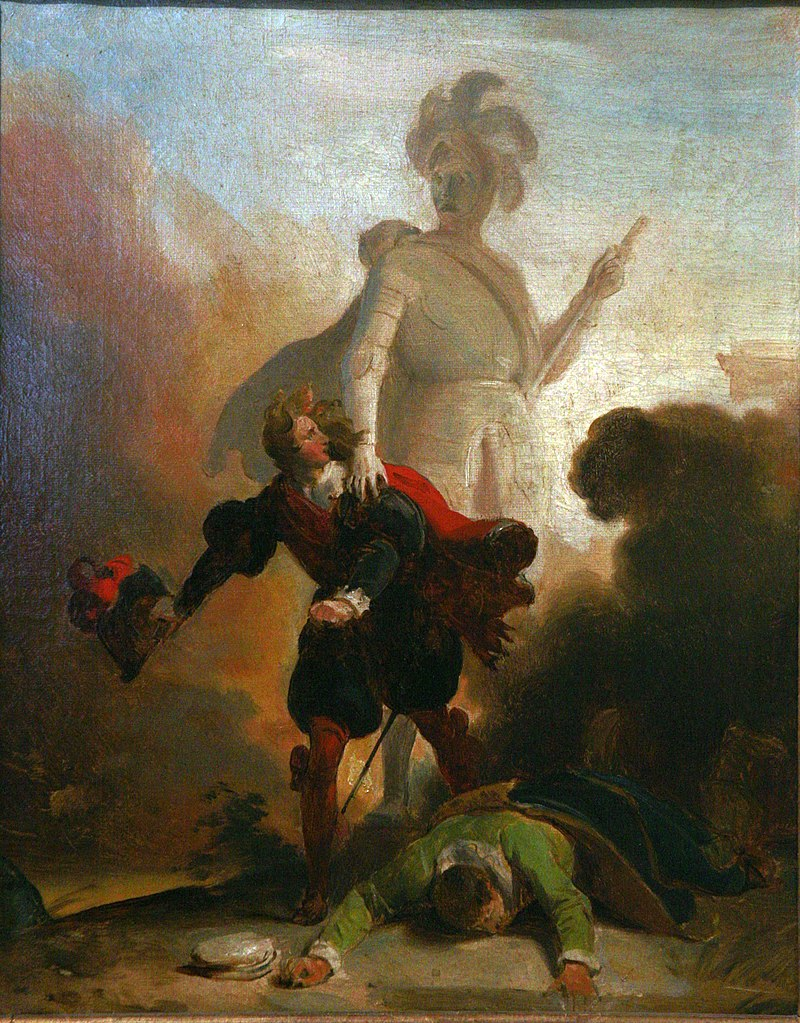
Ludwig van Beethoven
Beethoven transformed the image of a composer from that of a servant, like Haydn, to an artistic genius. He was rebellious, a loner, absorbed in his work, and unconcerned with his general appearance—all images we often associate with the creative genius. The next generation of composers revered him, and when he died, schools were closed and a tenth of the city attended his funeral.
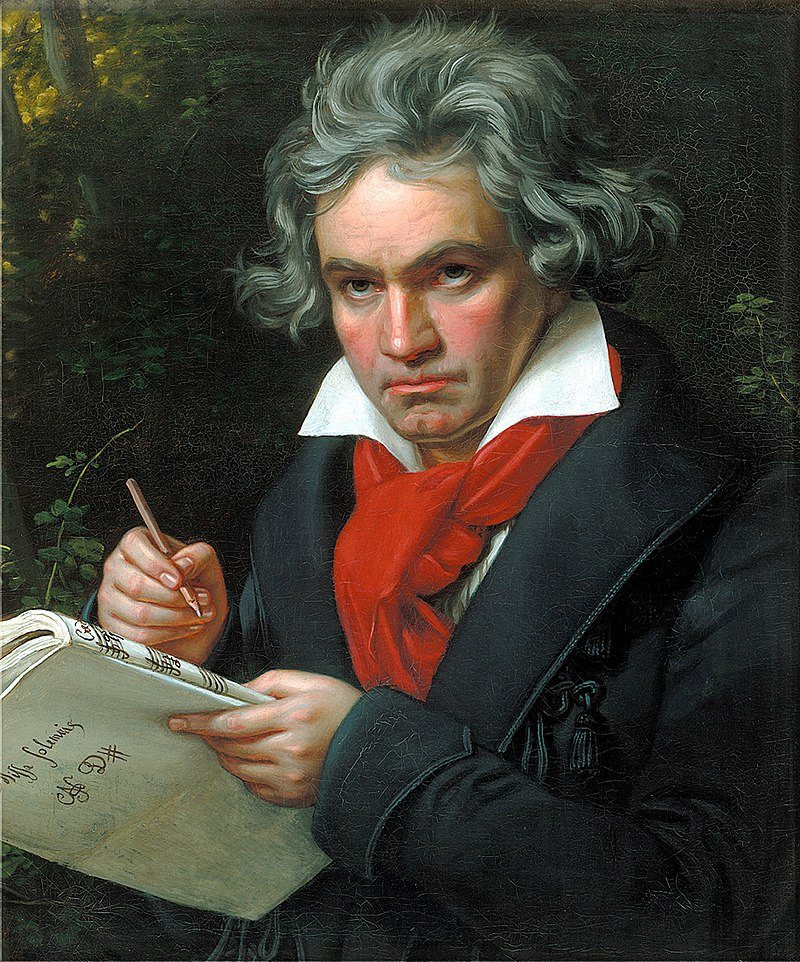
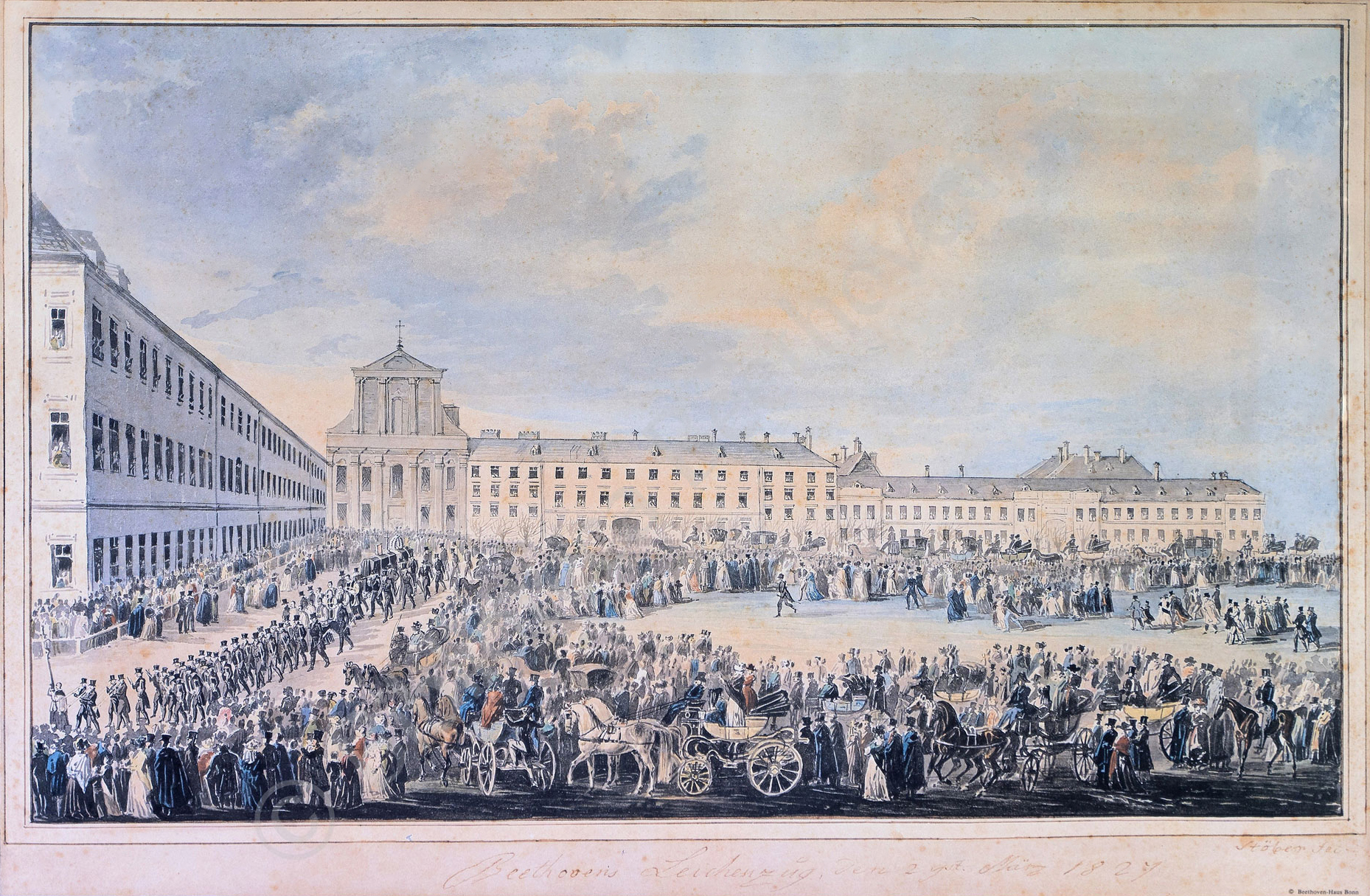
Beethoven was born in Bonn, Germany, in December of 1770. He came from a family of musicians and showed talent at an early age. As the Kapellmeister for the Elector, Beethoven’s grandfather held the most important musical position in Bonn; he died when Beethoven was three years old. Beethoven’s father, Johann Beethoven, sang in the Electoral Chapel his entire life. While he may have provided his son with music lessons at an early stage of Ludwig’s life, it appears that Johann had given into alcoholism and depression, especially after the death of Maria Magdalena Keverich (Johann’s wife and Ludwig’s mother) in 1787.
Beethoven moved to Vienna in his early twenties where he studied with Haydn; he amazed the city with his impressive and forceful piano playing. Upon arriving in Vienna in the early 1790s, Beethoven supported himself by playing piano at salons and by giving music lessons. Salons were gatherings of literary types, visual artists, musicians, and thinkers, often hosted by noblewomen for their friends. Here Beethoven both played music of his own composition and improvised upon musical themes given to him by those in attendance.
In April of 1800, Beethoven gave his first concert for his own benefit, held at the important Burgtheater. As typical for the time, the concert included a variety of types of music, vocal, orchestral, and even, in this case, chamber music. Many of the selections were by Haydn and Mozart, for Beethoven’s music from this period was profoundly influenced by these two composers.
Perhaps the most universally known fact of Beethoven’s life is that he went deaf: you can read entire books on the topic. It was at the end of the 1790s that Beethoven first recognized that he was losing his hearing. By 1801, he was writing about it to his most trusted friends. It is clear that the loss of his hearing brought about an existential crisis for Beethoven. During the fall of 1802, he composed a letter to his brothers that included his last will and testament, a document that we’ve come to know as the “Heiligenstadt Testament” named after the small town of Heiligenstadt, north of the Viennese city center, where he was staying. The “Heiligenstadt Testament” provides us insight into Beethoven’s heart and mind. Most striking is his statement about his experiences of social alienation due to his hearing loss: “[it] drove me almost to despair, a little more of that and I have ended my life—it was only my art that held me back.” The idea that Beethoven found in art a reason to live suggests both his valuing of art and a certain self-awareness of what he had to offer music. Beethoven and his physicians tried various means to counter the hearing loss and improve his ability to function in society. By 1818, however, Beethoven was completely deaf.
Beethoven had a complex personality. Although he read the most profound philosophers of his day and was compelled by lofty philosophical ideals, his own writing was broken and his personal accounts show errors in basic math. He craved close human relationships yet had difficulty sustaining them. By 1810, he had secured a lifetime annuity from local noblemen who wanted to ensure this artistic genius remained in Vienna creating music; Beethoven never lacked money. Still, his letters—as well as the accounts of contemporaries—suggest a man suspicious of others and preoccupied with the compensation he was receiving.
Ex. 4.7: Ludwig van Beethoven, “Pathétique” Sonata, first movement
This first movement of the “Pathétique” Sonata shows the extremes Beethoven used in his music. In the introduction, some chords are crashing while others are soft. Some passages are very slow and others very fast. He also uses a large range of the piano, from very low to very high. This piece is also more difficult than any sonata of Haydn or Mozart.
Although he lost his hearing, he could still hear music in his head, so Beethoven continued to compose. Shortly after accepting that he would eventually lose all sense of hearing, his “heroic” period began. These works typically had powerful themes and ended triumphantly. His works also grew in duration. His Third Symphony, originally titled after Napoleon (but later the more general “Heroic” after Napoleon declared himself emperor), is 45 minutes in duration, nearly twice as long as any Haydn or Mozart symphony.
Ex 4.8: Ludwig van Beethoven, Symphony No. 5, first movement
In Chapter 1, we mentioned the recurring short-short-short-long motive. It is constantly present: sometimes in its original form, sometimes with the long note held, sometimes as part of the accompaniment.
As this is the first movement of a multi-movement work, it’s in sonata-allegro form. Beethoven used traditional forms, but he considered form to be flexible. In earlier works, codas were generally short conclusions—a musical “the end”—but the coda in this movement is almost like another development section and is just as long in duration as the other sections of the movement.
Bonus Video: Beethoven, Symphony 5, First Movement, Graphic Score
Additionally, watch this video with graphic representations of the 1st movement of the symphony.
YouTube Video: “Beethoven, Symphony 5, 1st mvt. (“triangles”)” by smalin
Bonus Video: Beethoven, Symphony 5, Second Movement
If you’ve never listened to an entire symphony before, Beethoven’s 5th is a wonderful starting point.
YouTube Video: “Beethoven, Symphony 5, 2nd movement ©” by smalin
Bonus Video: Beethoven, Symphony 5, Second Movement, Graphic Score
You can watch this video with graphic representations of the 2nd movement to the symphony:
YouTube Video: “Beethoven, Symphony 5, 2nd movement ©” by smalin
Beethoven followed the intense and powerful first movement with a calm second movement. Like Haydn did on numerous occasions, Beethoven used a Theme and Variations. However, there are two themes in this movement. The first is lyric and serene and features the strings; the second, played by the brass, is triumphant. With two themes present, Beethoven further stretched the duration of what audiences were accustomed to, as this movement clocks in at over ten minutes in duration.
Bonus Video: Beethoven, Symphony 5, Third and Fourth Movements, Graphic Score
You can watch this video with graphic representations of the 3rd and 4th movements of the symphony.
YouTube Video: “Beethoven, Symphony 5, 3rd & 4th movements” by smalin
Traditionally, the third movement of a symphony was the stately minuet and trio. Beethoven (along with his former teacher, Haydn), were interested in something more driving, and named their faster third movements scherzo, or “joke.” Note the polyphony in the trio, as the theme moves throughout different voices playing musically independent lines. Again, while the Classical period predominately used homophonic textures, the great composers could also write polyphonically.
The third movement flows immediately into the fourth movement, and the symphony that began in C minor is now in a triumphant C major. Adding weight to this heroic finale are three trombones, piccolo, and contrabassoon, the first time these instruments were ever used in a symphony. Like the first movement, this is in sonata-allegro form with an exceptionally long coda.
The Final Years
Beethoven was completely deaf in the last fifteen years of his life, a time when he mostly composed introspective pieces of chamber music, music for a small number of musicians in a smaller performance space. However, his last symphony, written a couple of years before he died, is a large-scale work for orchestra and chorus that reflects on humanity.
Most of Beethoven’s late works are piano sonatas and string quartets—intimate, introspective chamber music. But, two pieces, the Mass in D major (Missa Solemnis, 1823) and Symphony No. 9 (1824), are large-scale compositions for full orchestra and chorus. In these later works, Beethoven strives once again to communicate directly to a broad spectrum of humanity.
Ex. 4.9: Ludwig van Beethoven, Symphony No. 9, fourth movement (excerpt, “Ode to Joy”)
This is only a portion of the last movement (which lasts over twenty minutes in duration). This portion includes a theme and variation of the famous “Ode to Joy,” Beethoven’s setting of Friedrich von Schiller’s An die Freude, or Ode to Joy, a poem praising the universal bond of humankind.
Some trivia related to Beethoven’s Ninth Symphony: when the compact disk was being created, it was designed to hold at least 74 minutes worth of music so that Beethoven’s Ninth could play on a single disk.
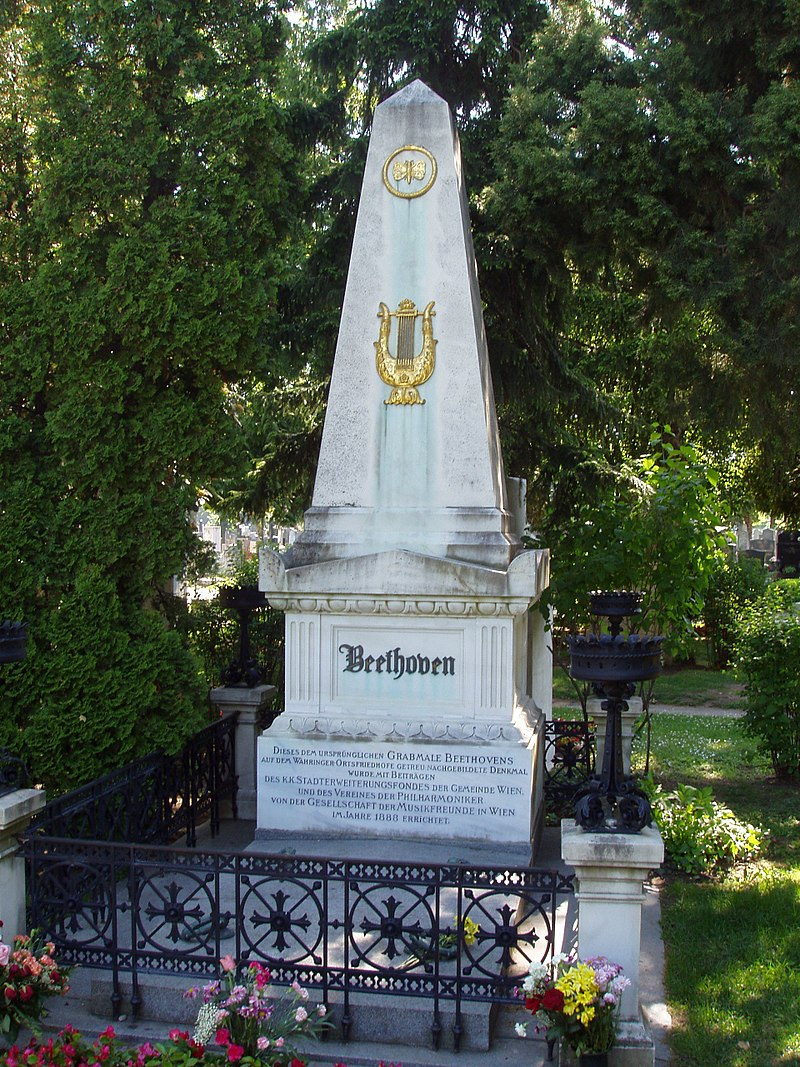
Beethoven’s Influence and the Culture of the Symphony
When Ludwig van Beethoven’s Seventh Symphony was first performed in December 1813, it was referred to by one critic as a “companion piece” to Wellington’s Victory, the other of Beethoven’s works that premiered on the program. The symphony was performed on a program presented at the University of Vienna that combined several musical genres and features—notably military marches, experimental automatic instruments, and shorter works—to honor and support those wounded at the Battle of Hanau (near Frankfurt) in a sequel to the Battle of Prague that pushed Napoleon back into France. Beethoven had two pieces on the program. Wellington’s Victory, or the Battle of Vitoria premiered alongside Symphony No. 7, and proved intensely popular among that audience and other audiences of the day. Wellington’s Victory is made up of a mixture of patriotic tunes meant to evoke the music of the Battle of Vitoria’s participant countries, and commemorated British, Spanish, and Portuguese troops’ victory over Napoleon’s army in June of 1813.
Both practical and philosophical underpinnings of concert culture were changing during the early nineteenth century, which, in turn, drastically changed how instrumental ensembles operated and how concert programs were designed. In previous times, instrumental ensembles that could perform symphonies, concertos, and other orchestral works were most often either assembled and paid as a part of lavish court budgets—for example, composer Franz Josef Haydn’s post at the Esterhazy palace in modern-day Austria near the Hungarian border came with a budget that could subsidize a large orchestra for the time—or instrumentalists were hired as “gig musicians” to play in small public concerts or salons. The more stable job for musicians was found in the 18th-century opera house, where instrumentalists and singers were hired for entire seasons. It wasn’t until the very end of the 18th century that codified orchestras and symphony halls were established in Europe—notably in Vienna, although other metropolitan areas followed shortly after—to perform for public audiences, rather than private parties in court palaces or semi-public events in rented halls.
The performance that featured Wellington’s Victory and Symphony No. 7 was an event that would have been a familiar construction to audiences of the time—a semi-public performance to benefit a charitable cause, featuring multiple types of music. However, by the end of the 19th century, concert formatting and audiences—and the musical values and investments of the concert-going public—had dramatically changed, due, in part, to the influence of Beethoven’s symphonic output. Venerated by music critics as the future of orchestral music in the later part of Beethoven’s life and after his death, and emulated by numerous composers such as Berlioz, Mendelssohn, Brahms, and Wagner, Beethoven’s symphonies became emblematic of what composers and concertgoers “should” value in orchestral performance. Beethoven’s compositional emphasis on extensive thematic transformation—trying out tunes and short phrases in different permutations throughout various keys and moods—eventually became a benchmark for symphonic excellence. Indeed, it was Beethoven who first expanded the symphonic form from a relatively brief concert piece—Mozart’s symphonies clock in at around 20-25 minutes running time—to an expansive 40-50 minutes, due to the spinning out of his numerous experiments with structure and thematic transformation. Longer symphonies became standard after Beethoven’s lifetime for most composers in Europe and beyond.
Thematic transformation abounds in Beethoven’s symphonies, and Symphony No. 7 is no different. However, there is a dramatic shift between the motivic transformation in the first movement and the second. In the latter part of the first movement, the quick vivace, the short melodic material is relentlessly redefined in every combination possible, shifting unexpectedly in different harmonic keys and directions, leading to a bombastic finale. However, in the second movement—marked “Allegretto,” considered slightly too fast to be a “slow” movement—the theme is somberly repeated over and over again, the enigmatic shifts in the tune between major and minor building tension in a plodding accrual.
Wellington’s Victory is largely discounted now, considered a gimmicky and ham-fisted lesser work residing in the shadows of Beethoven’s symphonies—but, at the time, there were a great many factors that contributed to the enthusiasm for the piece. First, the obvious political/cultural emphasis on patriotism during wartime led to a fashionable investment in the events of the Napoleonic War, and to an enthusiasm for military-inspired musical topics. Second, during this period, it was not unusual for concerts to include shorter pieces alongside longer, more substantial ones—operatic overtures placed next to an art song followed by a symphony and or/concerto, coexisting with more vernacular fare. And, third, ideas about what audiences should value in concert music were rapidly changing during this period. The monolithic stronghold that Beethoven’s symphonies later developed in the symphonic music world had not yet been cemented. There was less emphasis on “timelessness” in musical composition—that insistence developed in the later part of the 19th century and still persists today. We expect concert music that is performed in symphonic halls to be easily reinterpreted by each new generation, and we value this timelessness over contextually bound works. This contributes to the trend of putting certain composers on a pedestal, a veneration that is reinscribed in subsequent concert series seasons as the same orchestral pieces are programmed again and again.
It is not true, however, that there was no enthusiasm for Symphony No. 7, at that premiere performance and afterward. The piece’s second movement, a somber march chorale that belied expectations of a slow section after the relentless opening movement, became its own “hit,” and was often encored in the middle of the piece by inspired audiences. Indeed, the movement was subsequently programmed as a stand-alone piece at orchestral concerts and was sometimes interpolated into others of Beethoven’s symphonies—notably the Second and Eighth—due to its popularity. This is yet another example of how concert audiences and ensembles differed in their expectations of our own time; it was not unusual at the time to present partial works, or insert movements from other works within codified pieces, in a “pick-n-mix” approach to concertizing that is seldom espoused today.
Symphonic concert culture has significantly changed since Beethoven’s life and death, and much of our experiences in Western concert halls are indeed predicated on how Beethoven was venerated by composers and audiences alike throughout the 19th century. Though it is fascinating to think when we hear his Symphony No. 7—so full of the clever permutating thematic transformation audiences have come to expect of his works—that, at the time, it may have been considered “a companion piece” to the more immediately culturally-relevant Wellington’s Victory. This indicates just as much about what concert culture has conditioned audiences to expect and value over the last two hundred years as it does about the contextual tastes of the original audiences in 1813.
The above section is from the Music Academy of the West blog: “Beethoven’s Seventh, a ‘companion piece?'” and was included with permission from the author, Eugenia Siegel Conte.
Meanwhile, Throughout the World
Most of the surviving records of Western music document trends and histories in Europe. A brief sample of other music throughout the world during these time periods include:
1700s – The Ephrata Cloister, a religious commune in Pennsylvania, writes a collection of choir pieces, which includes the first known compositions written by women in America.
1753 – The British Museum acquires a drum made of wood and deer skin in Virginia made in the manner of drums from Ghana, preserving an example of African music.
1777 – The United States Continental Army adds trumpets in their military bands to help coordinate cavalry movement.
Late 1700s – The Three Jewels of Carnatic Music, a trio of influential musicians—Tyagaraja, Muthuswami Dikshitar, and Syama Sastr—create a new and distinct style of South Indian classical music.
Attributions
This chapter was adapted from Understanding Music: Past and Present by N. Alan Clark, Thomas Heflin, Jeffrey Kluball, and Elizabeth Kramer from the University System of Georgia, licensed by a CC BY-SA 4.0 international license.
Works Cited
Siegel Conte, Eugenia. “Beethoven’s Seventh, a ‘companion piece?’” Music Academy of the West, 21 Aug. 2021, https://musicacademy.org/resonance-08-04-2021/. Shared with permission.
Sometimes called “light opera;” light or comic in nature, with a happy ending and sometimes spoken dialogue.
Soft dynamic.
Loud dynamic.
A form often found in the first and last movements of sonatas, symphonies, and string quartets, consisting of three parts – exposition, development, and recapitulation.
First section of a sonata form movement, in which the themes and key areas of the movement are introduced; the section normally modulates from the home key to a different key.
The middle section of a sonata-form movement in which the themes and key areas introduced in the exposition are developed.
Third and final second of a sonata-form movement, in which the themes of the exposition return, now in the home key of the movement.
The most important pitch of a key. The note from which the other pitches are derived and has a feeling of home or stability.
Optional final section of a movement that reasserts the home key of the movement and provides a sense of conclusion.
Gathering places for knowledge and amusement.
Form that prominently replaced the minuet in symphonies and strings quartets of the nineteenth century. Like the minuet, scherzos are ternary forms and have a triple feel, although they tend to be somewhat faster in tempo than the minuet.
Music, such as art songs, piano character pieces, and string quartets, primarily performed in small performing spaces, often for personal entertainment.

